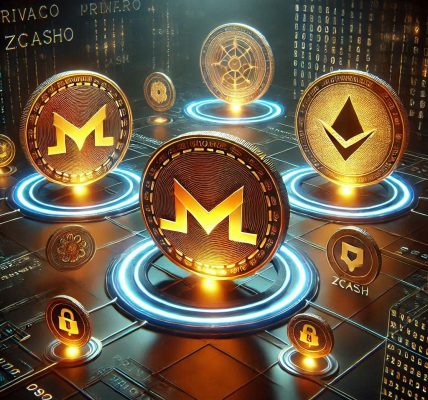Cryptocurrency has transformed the way we think about money, with Bitcoin being the undisputed leader in this space. However, over the years, alternative coins, commonly known as altcoins, have gained significant traction. Altcoins refer to any cryptocurrency other than Bitcoin, and they come in a variety of shapes, sizes, and use cases.
As an investor, the question often arises: Should I invest in altcoins? While they present exciting opportunities, they also come with risks. In this blog, we will break down the pros and cons of investing in altcoins to help you make an informed decision when diversifying your crypto portfolio.
What Are Altcoins?
Altcoins are all the cryptocurrencies launched after Bitcoin, which include:
- Ethereum (ETH)
- Ripple (XRP)
- Litecoin (LTC)
- Cardano (ADA)
- Polkadot (DOT)
- Solana (SOL)
These coins are designed to serve different purposes, ranging from decentralized finance (DeFi) platforms to privacy coins and even gaming tokens. They offer alternatives to Bitcoin, but also come with unique features and potential for growth.
The Pros of Investing in Altcoins
Investing in altcoins can be highly rewarding if done correctly. Here are some of the key benefits:
1. Higher Potential for Growth
One of the most compelling reasons to invest in altcoins is their growth potential. While Bitcoin is already a well-established cryptocurrency with a market cap in the trillions, many altcoins are still in the early stages of their development. This means they could experience explosive growth as adoption increases.
- Ethereum: Ethereum’s smart contract capabilities have made it the foundation of decentralized finance (DeFi) and NFTs. The Ethereum 2.0 upgrade promises to make the network more scalable and efficient, potentially increasing its value.
- Solana: Known for its high-speed transactions and low fees, Solana has attracted developers looking to build decentralized apps (dApps) and DeFi protocols, making it a contender for widespread adoption.
Many altcoins have delivered significant returns to early investors, sometimes outperforming Bitcoin in percentage gains.
2. Diversification
Diversification is a key principle of investing, and altcoins provide an opportunity to diversify a cryptocurrency portfolio beyond Bitcoin. While Bitcoin’s dominance in the market is still strong, many investors are turning to altcoins for exposure to different blockchain projects and use cases.
By investing in multiple altcoins, you can reduce the risk of having all your assets tied to the performance of a single asset like Bitcoin. If one coin underperforms, others might outperform, balancing your portfolio.
3. Innovation and New Use Cases
Altcoins are often designed to solve specific problems or offer unique features that Bitcoin cannot provide. For example:
- Ethereum enables smart contracts and decentralized applications (dApps), revolutionizing sectors like finance, gaming, and supply chain management.
- Ripple (XRP) aims to enable fast and cost-effective international money transfers for financial institutions, challenging traditional banking systems.
- Chainlink (LINK) connects smart contracts to real-world data, enabling decentralized finance to operate with real-world inputs.
These innovations drive interest and investment in altcoins, and as blockchain technology continues to evolve, new altcoins with even more diverse use cases will emerge.
4. Lower Entry Price
Another reason altcoins attract investors is their lower entry price compared to Bitcoin. At the time of writing, Bitcoin’s price is around $30,000, whereas many altcoins are priced at a fraction of a dollar or even less. This lower price point allows investors with limited capital to accumulate more coins and potentially see larger returns in terms of percentage growth.
5. Community and Ecosystem Growth
Altcoins often have active and passionate communities. For instance, the Cardano community is known for its focus on sustainability and academic research, while the Polkadot community is dedicated to creating interoperable blockchains. These communities often contribute to the coin’s development and real-world adoption, creating a network effect that drives long-term value.
The Cons of Investing in Altcoins
Despite their potential, altcoins come with their own set of risks and drawbacks. Here are some of the challenges to consider before diving in:
1. High Volatility
Altcoins are often more volatile than Bitcoin, which can lead to significant price swings. This volatility can present high-risk, high-reward opportunities but also substantial losses. While Bitcoin has shown relative stability over the years, altcoins can experience rapid fluctuations due to market speculation, technological issues, or regulatory news.
For instance, a coin might see its price jump by 50% in a single day, only to crash by 30% the next. This makes altcoins riskier, especially for those who are looking for stable, long-term investments.
2. Lack of Regulation
The cryptocurrency market is still largely unregulated, and altcoins are particularly vulnerable to legal and regulatory challenges. Governments and regulatory bodies around the world are still figuring out how to treat cryptocurrencies. Countries like China and India have cracked down on crypto-related activities, while the US has yet to pass clear regulations on the use of digital currencies.
Without proper regulation, altcoins are more susceptible to manipulation, scams, and even complete failure if they fail to meet legal requirements. This regulatory uncertainty is a major risk for investors.
3. Limited Adoption
While Bitcoin has widespread recognition and adoption, many altcoins have yet to reach the same level of mainstream usage. Some altcoins are highly speculative, with much of their value driven by hype and marketing. If an altcoin doesn’t gain real-world use or adoption, it can quickly become irrelevant or lose value, leaving investors with significant losses.
4. Security and Scams
The crypto market is rife with scams and pump-and-dump schemes, especially in the altcoin space. Since many altcoins are not as well-established as Bitcoin, they are often targeted by malicious actors looking to profit from uninformed investors. It’s important to carefully research any altcoin before investing, as some may be exit scams, rug pulls, or poorly developed projects with no real value.
5. Technological Risks
Altcoins are often built on experimental blockchain technologies, which means they can be subject to bugs, security vulnerabilities, or network failures. For instance, Ethereum’s transition to Ethereum 2.0 involves significant technological changes, and while the upgrade is designed to improve scalability, it also carries risks if not executed properly.
Some altcoins may never achieve the promised technological advancements, which could lead to loss of investor confidence and a decline in value.
How to Safely Invest in Altcoins
If you decide to invest in altcoins, here are some tips to reduce risk:
- Research: Before investing in any altcoin, understand its use case, technology, development team, and community support.
- Diversify: Spread your investments across multiple altcoins to reduce risk.
- Invest with caution: Only invest what you can afford to lose, given the high volatility of altcoins.
- Use reputable exchanges: Make sure to buy altcoins from well-known and secure cryptocurrency exchanges, such as Binance, Coinbase, or Kraken.
- Keep your coins secure: Use hardware wallets to store your altcoins securely, especially if you’re holding them for the long term.
Conclusion
Investing in altcoins can offer high rewards, but it comes with significant risks. The potential for growth, innovation, and diversification makes altcoins attractive to many investors, but their volatility, regulatory uncertainty, and the possibility of scams mean that caution is essential.




